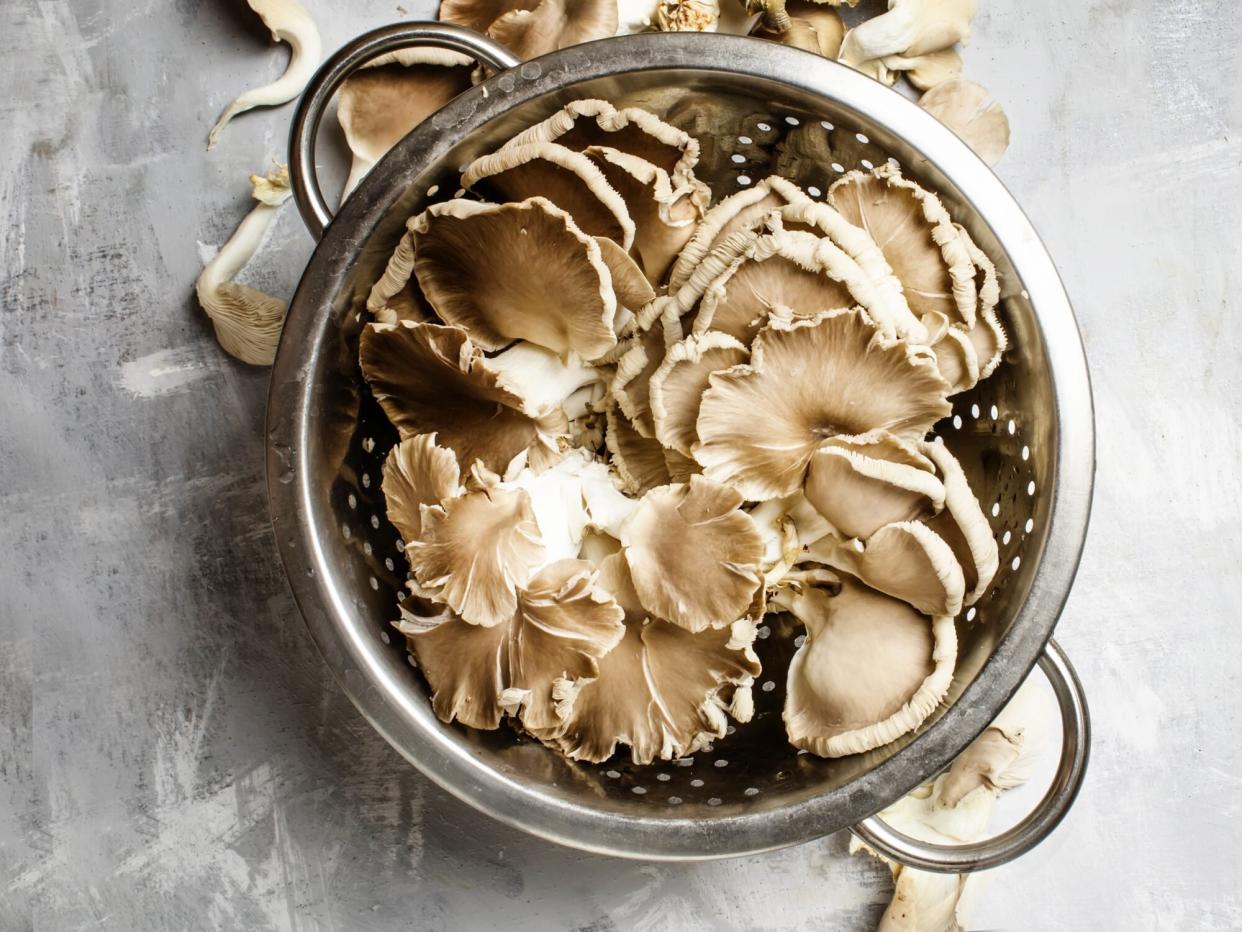How to Wash Mushrooms—Including Store-Bought, Cultivated, and Wild-Foraged Fungi

5PH/Getty Images
TABLE OF CONTENTS
On This Page
Should You Wash Mushrooms?
How to Wash Store-Bought Mushrooms
How to Wash Cultivated Wild Mushrooms
How to Wash Wild-Foraged Mushrooms
We're always told to wash fruit and vegetables—but are there exceptions? Mushrooms often have visible specks of dirt, so surely your first thought might be to give them a quick rinse. However, culinary professionals have always been divided on the topic of whether to wash or not to wash mushrooms. There might not be a right answer, and it might even depend on who you ask or your personal preference. Perhaps even the amount of dirt clinging to the spongy fungi will sway you in one direction.
In culinary school, washing mushrooms under running water was basically considered a sin punishable by the culinary gods. We were taught to always use a damp paper towel to "wash" mushrooms, and gently rub off the almost guaranteed-to-be-there dirt. We were promised this was enough, and if we swayed toward the washing route, the mushrooms would absorb the water, turn soggy, and never achieve the desirable browning that makes them so delicious. The New Food Lover's Companion supports the damp paper towel route and advises that "if necessary," rinse mushrooms with cold water and dry thoroughly.
Yet, the highly respected author Harold McGee documented in his 1990 book, Curious Cook: More Kitchen Science and Lore, that through his experiment on washing and soaking mushrooms, he found that barely any water was actually absorbed. This, in turn, seemingly granted permission to give mushrooms a quick rinse under the faucet. So what is one to do? Keep reading for tips on how to clean and wash mushrooms.
RELATED: How—and When—to Wash Grapes So They Stay Fresh
Are You Supposed to Wash Mushrooms?
Regardless of the different schools of thought on how to get that pesky dirt off mushrooms, there is no doubt that it is important to clean mushrooms before cooking, one way or another, however which way you choose to do so. Vegetables (and fruits) can sometimes carry germs that can lead to foodborne illness, so it is important to be mindful.
Follow the steps below just before cooking. (To avoid slimy mushrooms and maximize freshness, never wash and store them).
Here is a simple way to clean mushrooms:
Lightly dampen a paper towel.
Gently wipe mushrooms with damp paper towel to remove any dirt.
If your batch of mushrooms has lots of visible dirt or you prefer to rinse them, here is how to wash mushrooms:
Place mushrooms in a colander.
Quickly rinse with cold water; shake off excess water.
Dry as much as possible with a paper towel.
RELATED: 9 Mouthwatering, Easy-to-Make Mushroom Recipes
How to Wash Store-Bought Mushrooms
Most mushrooms found at grocery stores, such as white, button, and cremini, are grown in indoor farms with pre-treated compost to reduce bacteria levels, and they often come packed pretty clean. A damp paper towel to clean these mushrooms should do the trick. There might, of course, be a batch with a bit more dirt stuck on them, and if that's the case and a damp paper towel will not do, go for the very quick rinse, shake, and dry method.
How to Wash Cultivated Wild Mushrooms
Some of the most commonly cultivated mushrooms according to the North American Mycological Association are shiitake, maitake, royal trumpet, and oyster mushrooms. The latter is actually considered one of the easiest to grow at home. These beauties don't require any special care, but do keep in mind if you're going for crispy mushrooms, the quick-rinse option might deter the shrooms from getting that satisfying golden-brown crisp.
How to Wash Wild-Foraged Mushrooms
If you're reading this, you must be a mushroom pro or maybe you went on a foraging walk with a mushroom expert or a trained mycologist—a person who studies the science of fungi—since extreme caution is a must when picking wild mushrooms. Foraging sounds adventurous, maybe even romantic, and some mushrooms in the wild could look harmless and perhaps familiar, but it is very important to never eat wild mushrooms without professional guidance or expertise. According to the Mushroom Council, there are thousands of varieties of inedible and poisonous mushrooms. The Mushroom Council recommends purchasing commercially grown mushrooms or shopping from a trusted retailer, or enjoying them at a restaurant if you have a craving for the wild ones.
RELATED: 30 Easy Shiitake Mushroom Recipes That'll Make Your Dinner (or Brunch) Totally Wow-Worthy
With that said, the same rule applies when washing wild-foraged mushrooms as the other types, for the most part. Chanterelles and morels are some of the most common types of wild-foraged mushrooms. For chanterelles, take your pick from either of the above methods. For morels, their distinct honeycomb shape might allow more dirt to sneak into the crevices, especially the larger ones. When it comes to fresh morels, it's best to give them a good shake in a paper bag first to loosen any dirt or debris. Then, right before cooking, swish them around in a bowl of cold water to dislodge any more dirt, preferably with a couple of tablespoons of salt dissolved in the water. Immediately arrange them on paper towels and thoroughly pat dry. Also due to their unique shape, it is more likely for water to seep in, so don't skip the drying step. However, if you can get away with simply brushing off any dirt from the mushrooms, either with a mushroom or pastry brush, go for it.
